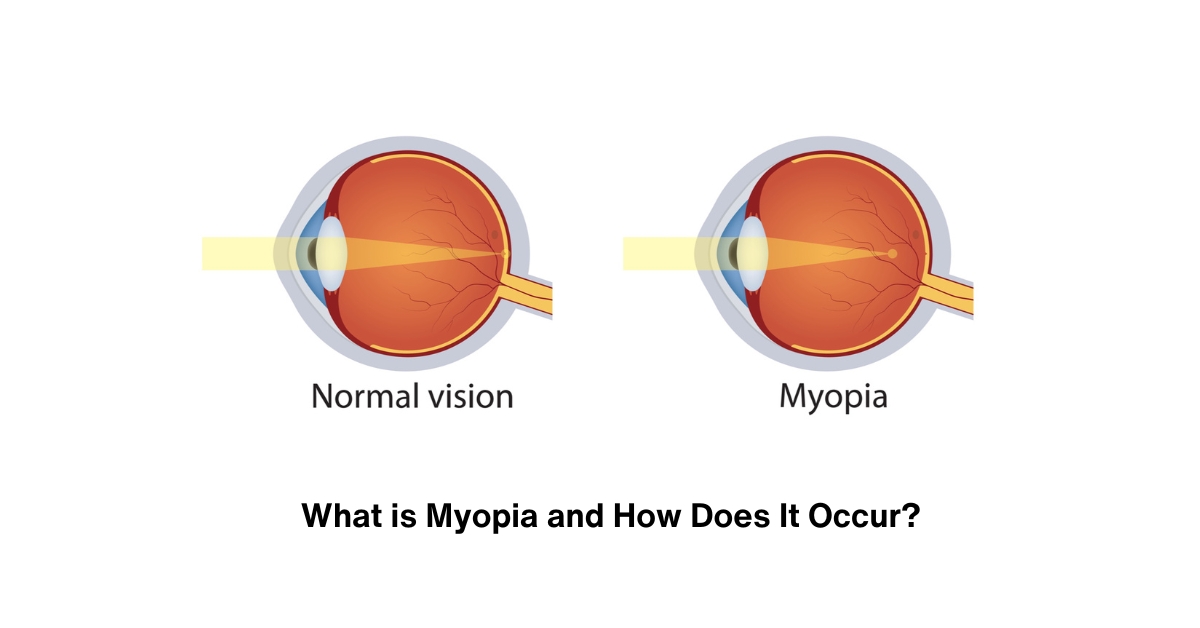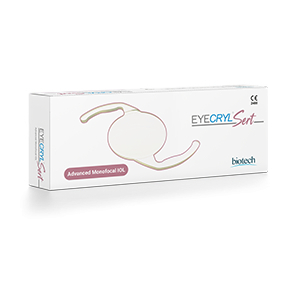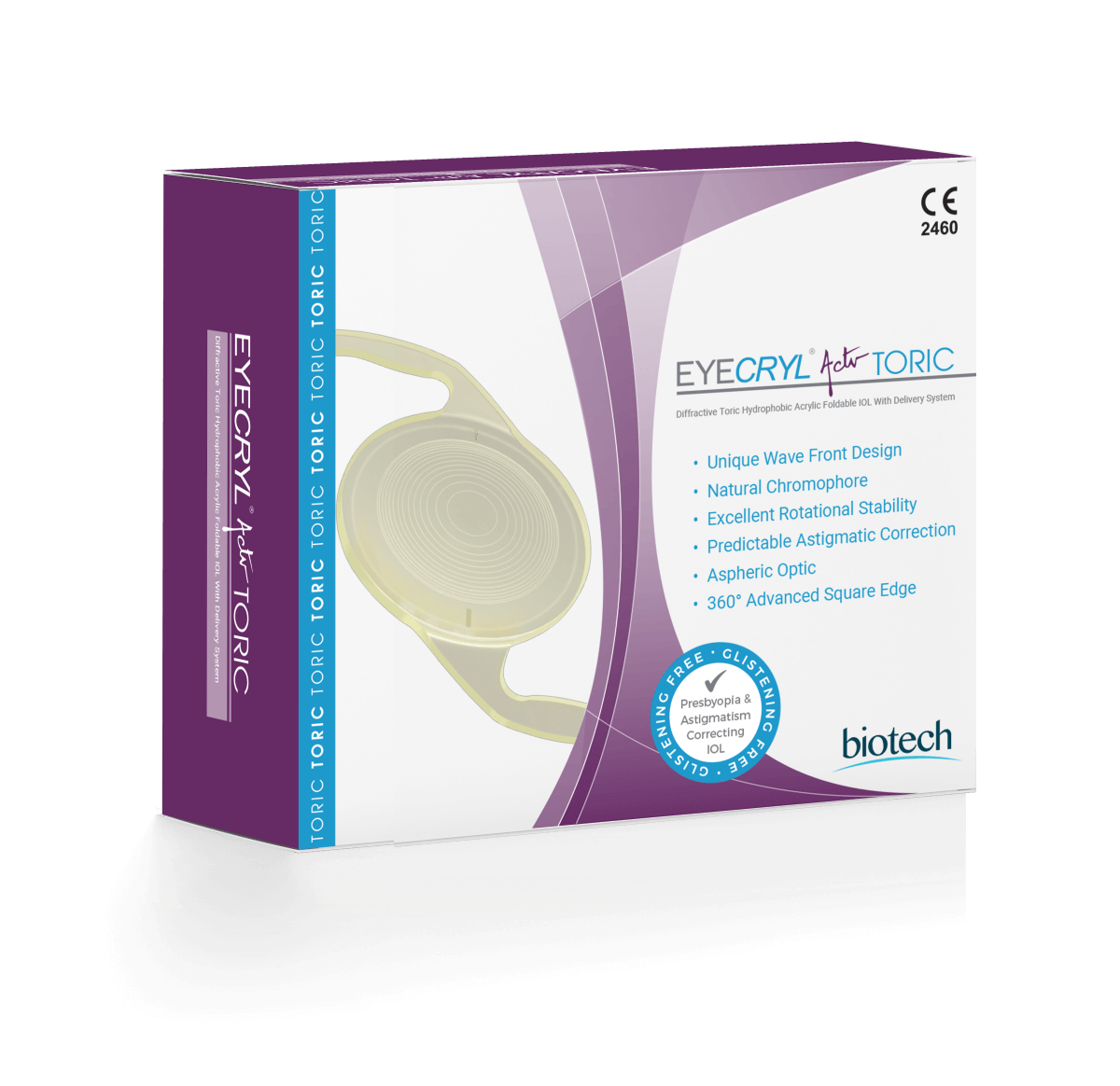
What is Myopia and How Does It Occur?
Myopia is a common refractive error characterized by blurry vision for distant objects. It can affect individuals of all ages and has both genetic and environmental risk factors. Early detection and appropriate management of myopia are essential for preserving eye health and preventing long-term complications associated with the condition. Regular eye exams, lifestyle modifications, and proactive intervention strategies can help individuals effectively manage myopia and maintain clear vision for optimal quality of life.
Myopia, commonly known as nearsightedness, is a refractive error where distant objects appear blurry while close objects remain clear. It develops when the eyeball is too long or the cornea is too curved, causing light rays to focus in front of the retina rather than directly on it. This refractive error occurs due to a mismatch in the optical power of the eye and the length of the eyeball. The exact cause of myopia is not fully understood but is believed to involve a combination of genetic predisposition and environmental factors. Factors such as excessive near work, limited outdoor time, and prolonged use of digital screens may contribute to its development. Additionally, family history plays a significant role, with individuals having parents with myopia being at a higher risk. As the eye continues to grow and develop, myopia may progress, leading to worsening vision over time. Early detection through comprehensive eye exams and appropriate management are crucial for addressing myopia effectively and preventing potential complications associated with the condition.
What are the Symptoms of Myopia?
Symptoms of myopia include
- blurry vision when looking at distant objects,
- difficulty seeing road signs or classroom whiteboards,
- squinting to see clearly, and experiencing eye strain or headaches, particularly during activities that require focusing on distant objects for extended periods.
These symptoms may prompt individuals to seek an eye exam from an eye doctor, eye care specialist or optometrist.
How is Myopia Diagnosed?
Myopia is diagnosed through a comprehensive eye exam conducted by an eye care professional, such as an optometrist or ophthalmologist. The examination typically includes several tests, including visual acuity tests to measure clarity of vision at various distances, refraction tests to determine the exact prescription needed for glasses or contact lenses, and an evaluation of the overall health of the eyes. Additionally, the eye doctor may assess the risk of complications associated with myopia, such as retinal detachment, especially in individuals with high myopia or a family history of the condition. Early diagnosis allows for timely intervention and appropriate management strategies to address myopia effectively.
Which Age Groups Does Myopia Affect?
Myopia can affect individuals of all ages, but it commonly begins during childhood or adolescence. However, it can also develop later in life due to various environmental and genetic factors. Regular eye exams are essential for detecting myopia early, particularly in children, as early intervention can help slow the progression of the condition.
Is Myopia Genetic?
Yes, myopia often has a genetic component, meaning that individuals with a family history of myopia are at a higher risk of developing the condition themselves. However, environmental factors such as prolonged near work and limited outdoor time can also contribute to the development and progression of myopia. Understanding one’s family history of eye conditions is important for assessing individual risk factors and implementing preventive measures.
Does Myopia Require the Use of Glasses or Lenses?
Yes, individuals with myopia typically require corrective lenses such as eyeglasses or contact lenses to help them see clearly at a distance. These lenses work by adjusting the way light rays enter the eye, allowing them to focus properly on the retina and improving vision. Properly prescribed glasses or contact lenses can significantly enhance the quality of life for individuals with myopia by enabling clear vision for both near and distant objects.
Can Myopia Be Treated Surgically?
Yes, refractive surgery such as LASIK (laser-assisted in situ keratomileusis) can be used to treat myopia by reshaping the cornea to correct the refractive error. This procedure aims to improve the eye’s ability to focus light rays directly on the retina, thereby reducing or eliminating the need for glasses or contact lenses. However, surgical treatment options should be carefully considered in consultation with an eye doctor, taking into account factors such as age, overall eye health, and lifestyle considerations.
How Does Myopia Affect Eye Health?
Myopia can increase the risk of developing certain eye conditions, including retinal detachment, glaucoma, and myopic macular degeneration. Individuals with high myopia, in particular, are at a higher risk of these complications, which can potentially lead to vision loss if left untreated. Therefore, regular eye exams and proactive management of myopia are crucial for preserving eye health and preventing long-term complications associated with the condition.
FAQ
How Does Myopia Affect the Quality of Vision?
Myopia affects the quality of vision by causing distant objects to appear blurry or out of focus while nearby objects remain clear. This can significantly impact daily activities such as driving, watching TV, or playing sports, requiring individuals to rely on corrective lenses for clear vision. Properly prescribed glasses or contact lenses can effectively compensate for the refractive error associated with myopia, restoring clear vision and improving overall quality of life.
How to Prevent or Control Myopia?
While genetics plays a significant role in the development of myopia, there are steps that can be taken to help prevent or control its progression. These include spending more time outdoors, practicing good eye habits such as taking frequent breaks from near work, and ensuring regular eye exams to monitor changes in vision. Additionally, certain lifestyle modifications such as maintaining a balanced diet, getting adequate sleep, and managing screen time can contribute to overall eye health and may help slow the progression of myopia, particularly in children and adolescents.
What are the Differences Between Myopia and Other Visual Impairments?
Myopia is just one type of refractive error that affects the eye’s ability to focus light properly. Other common refractive errors include hyperopia (farsightedness) and astigmatism, each of which has its own unique characteristics and treatment options. While myopia primarily affects distance vision, hyperopia affects near vision, and astigmatism causes blurry vision at all distances due to irregularities in the curvature of the cornea or lens. Proper diagnosis and management of these refractive errors are essential for optimizing visual acuity and maintaining overall eye health.
Our Bestsellers
Categories
Company
Media
Follow Us
© Copyright Biotech /Terms Of Use - Privacy Policy
Version 2_CT_1212222



